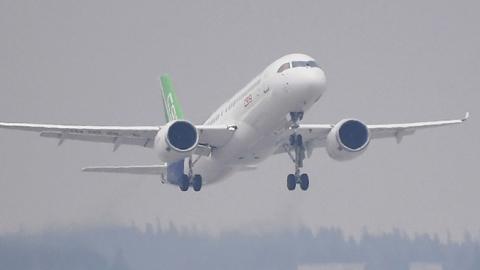As the Trump administration develops trade policies to match its tough rhetoric from the 2016 election campaign, it would do well to focus on the single biggest foreign challenge to the modern U.S. economy: China. While a plan to counter the dumping of metals into the U. S. market is certainly needed, a more existential threat is represented by the “Made in China 2025” program now being implemented with vigor by President Xi Jinping. To meet this challenge, new trade tools need to be perfected and alliances with like-minded industrial partners need to be strengthened.
Over the past three decades China has perfected what can only be called a mercantilist industrial policy. Their model features massive, state supported investment in basic industries, discouraging domestic consumption through various domestic policies, acquisition of foreign technology, and aggressive efforts to recycle the resulting trade surplus back into more investment in domestic production. Keeping the value of the yuan low is part of the self-reinforcing system. With the China 2025 program, the Chinese are stepping up their ongoing efforts to win dominance in higher technology industries and production processes. The increased emphasis on forced technology transfer from foreign firms operating in China and state directed and supported investment abroad gives new found strength to the model.
China is targeting over 400 industries and aims for domination of huge and growing local markets and, eventually, displacement of foreign rivals throughout the developed world. A few examples show the scope of their ambition. In semiconductors, China has planned over $200 billion in direct support to the nascent domestic industry. It is forcing consolidation of existing firms into globally-competitive national champions, and using opaque state-supported financing to acquire foreign firms with desired technology.
The commercial aerospace industry has benefited for decades from state financing and from coerced technology transfer from major foreign investors in China such as jet engine and avionics suppliers. The China 2025 effort aims for having 100 percent of parts for the domestic commercial aircraft corporation (COMAC) provided by Chinese suppliers by 2025. COMAC recently flew a single-aisle plane which is intended to compete with the Boeing 737 and Airbus A320, starting with the massive domestic market.
In the auto sector, China’s ambitions are to dominate the electric car market globally. China maintains a 25 percent tariff on imported cars (the U. S. analogue is 2.5 percent). All foreign firms building autos in China must partner with Chinese firms and China limits the foreign ownership of the resulting joint ventures to no more than 50 percent. It also requires the foreign partner to transfer strategic technologies to the Chinese investor.
As part of its master plan, China has in recent years begun to make it more difficult for foreign firms to operate effectively and profitably in China, using a variety of creative regulatory, administrative and financial tools. The most recent survey of business conditions by the American Chamber in China revealed that 80 percent of respondents think that they are “less welcome than before” in China, and over 50 percent that foreign firms are discriminated against in the enforcement of local laws and Chinese obligations under the World Trade Organization (WTO) membership. Similar results are reported by the European Chamber in China.
China has a long way to go to meet its ambitious goals in advanced industry, but clearly they are determined to make it a success. The best way to respond is through cooperative work with like-minded U. S. partners among developed and developing countries such as India, Mexico and possibly Brazil. More determined enforcement of existing WTO obligations would be a start, but long experience shows that unilateral efforts to thwart subsidization and dumping, let along currency manipulation and intellectual property theft, programs are time consuming and frequently fruitless.
More joint efforts with U. S. economic allies might be more effective, but developing new tools to meet the new Chinese model is also a necessity. For example, much of the new industrial policy relies on fortifying state-owned enterprises (SOEs): consolidating small firms, financing and directing them toward foreign acquisitions to obtain new technology, and suppressing domestic competition through administrative measures. The Unites States and its partners could be more aggressive in challenging the subsidies for SOEs, and also by using anti-trust reviews more broadly for SOEs which are eliminating competition in China. Denying China’s application to be treated as a market economy in the WTO would also help discourage the growth of state-owned firms and the systematic dumping of excess production into industrial nation markets. More aggressive reviews of Chinese technology-driven foreign acquisitions under the Committee on Foreign Investment in the United States (CFIUS) and its counterparts in Europe is also needed.
Sen. John Cornyn (R-Texas) has proposed measures to strengthen CFIUS and the European Commission is considering beefed up reviews in Europe. Joint challenges to China’s “localization” targets under China 2025, and to China’s currency manipulation efforts in the WTO also offer some promise. Finally, closer cooperation between Europe, Japan, Australia and like-minded partners in setting standards closer to private sector realities for new technologies and industries would help in countering Chinese efforts in areas like electric vehicles, 3-D printing and telecommunications.
In the coming weeks, U.S. policymakers would do well to keep in focus China’s mercantilist industrial policy. In the long run, the China 2025 program to build dominance in areas such as semiconductors, electronics, autos, heavy equipment and telecommunications is the biggest threat to both the G-7 economies and the national security interests of these nations.















